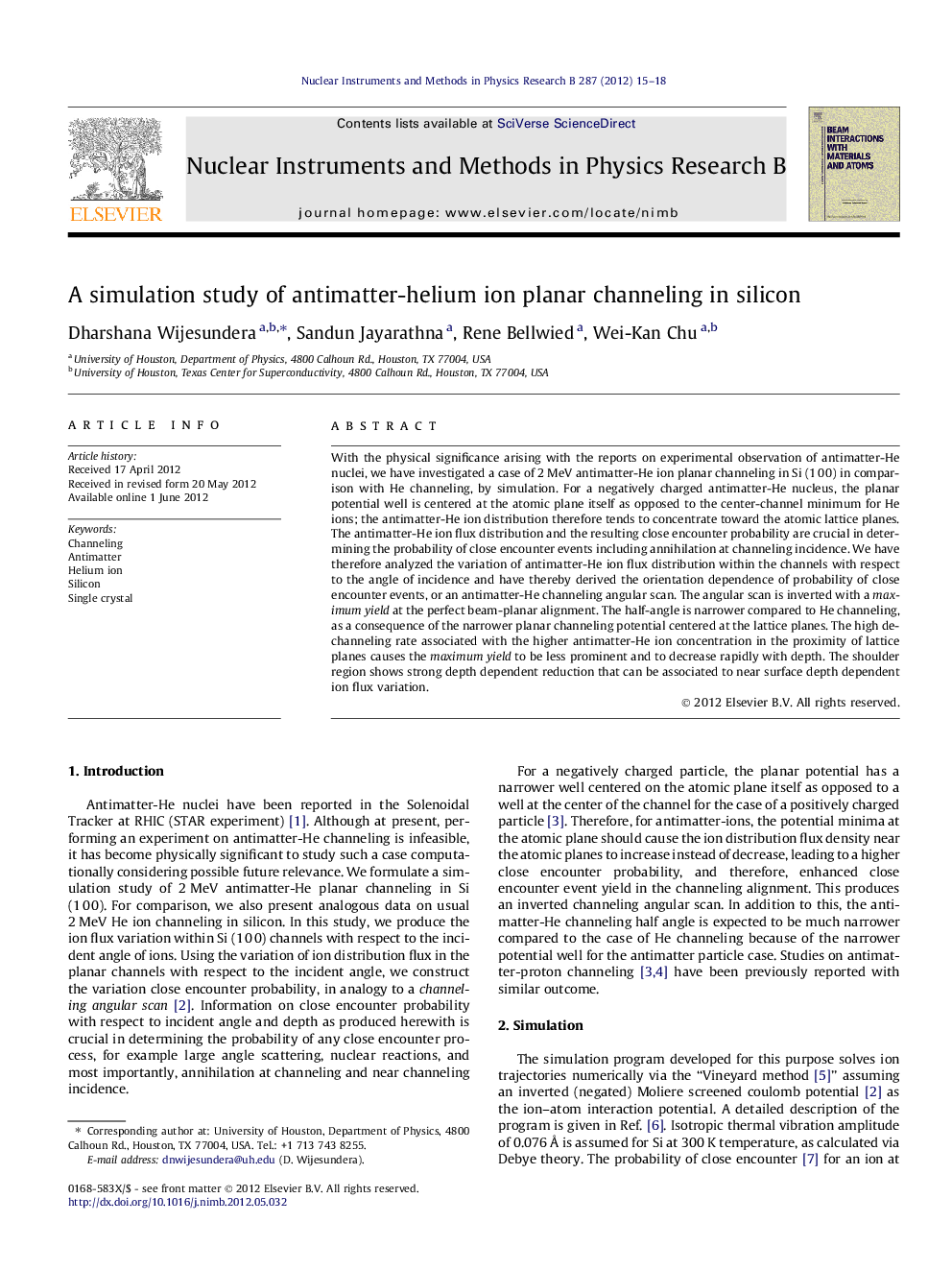| Article ID | Journal | Published Year | Pages | File Type |
|---|---|---|---|---|
| 1682222 | Nuclear Instruments and Methods in Physics Research Section B: Beam Interactions with Materials and Atoms | 2012 | 4 Pages |
With the physical significance arising with the reports on experimental observation of antimatter-He nuclei, we have investigated a case of 2 MeV antimatter-He ion planar channeling in Si (1 0 0) in comparison with He channeling, by simulation. For a negatively charged antimatter-He nucleus, the planar potential well is centered at the atomic plane itself as opposed to the center-channel minimum for He ions; the antimatter-He ion distribution therefore tends to concentrate toward the atomic lattice planes. The antimatter-He ion flux distribution and the resulting close encounter probability are crucial in determining the probability of close encounter events including annihilation at channeling incidence. We have therefore analyzed the variation of antimatter-He ion flux distribution within the channels with respect to the angle of incidence and have thereby derived the orientation dependence of probability of close encounter events, or an antimatter-He channeling angular scan. The angular scan is inverted with a maximum yield at the perfect beam-planar alignment. The half-angle is narrower compared to He channeling, as a consequence of the narrower planar channeling potential centered at the lattice planes. The high de-channeling rate associated with the higher antimatter-He ion concentration in the proximity of lattice planes causes the maximum yield to be less prominent and to decrease rapidly with depth. The shoulder region shows strong depth dependent reduction that can be associated to near surface depth dependent ion flux variation.
